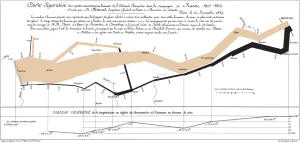 There are some people that identify as visual learners. These people are more prone to learn better through visual representation and strategies than from textual sources and the like. They are grouped in more of a “see it to believe it” type personality. There are several main ways that visual learners engage with information. These are taking notes during lectures or presentations, writing outlines, representing information in graphs/charts/diagrams, marking sources of information, and memorizing data through flashcards.
There are some people that identify as visual learners. These people are more prone to learn better through visual representation and strategies than from textual sources and the like. They are grouped in more of a “see it to believe it” type personality. There are several main ways that visual learners engage with information. These are taking notes during lectures or presentations, writing outlines, representing information in graphs/charts/diagrams, marking sources of information, and memorizing data through flashcards.

✅ AI Essay Writer ✅ AI Detector ✅ Plagchecker ✅ Paraphraser
✅ Summarizer ✅ Citation Generator
Taking notes can be an art when you are a visual learner. Bullet points, the Cornell Method, mind maps, the flow method, and writing about slides can all be ways to make notes more visually appealing. Bullet points allow us to organize and absorb information by seeing it in a point-by-point manner. With the Cornell Method, you can split a page into two sections based on the categories that will be learned. This allows us to easily filter certain data in our minds. For more abstract visual learners, mind mapping certain topics and ideas is ideal. Also, in the same vein, the flow method involves drawing and shapes to show how a certain idea unfolds. And finally, writing about slides of a presentation enables one to remember information easier and to focus on certain chunks of data (UOS Assistive Technology).
Like notes, outlines can be a strong visual tool as well. Writing outlines for papers and reports allows one to visually organize your main points paragraph by paragraph. It is useful to have outline with you at all times of the writing process in order to keep you on track and to stay concentrated (Roell, Kelly).
Using graphs and other visual representations of data is commonly said to be a great method of learning new information. According inspiration.com, “Venn diagrams, bar graphs, pie graphs and axis plots offer students multiple ways to visualize and investigate data. As students organize and analyze data, they ask meaningful questions and dig deeper to solve problems. Moving beyond simply memorizing facts, students acquire the skills of reasoning, inquiry and communication” (“Teaching and Learning with Plots and Graphs”). As you can see, visual representations of data allow a student to involve many areas at once to create a memorable and powerful learning experience.
In addition, interacting with your sources of information can lead to great visual learning. When flipping through your textbook, mark it up with notes, colorful stickers, and highlights to better absorb information and mark where certain information is. Treating your sources as something to be played with and involved with visually will increase your chances to memorize data and to be conversant in it.
Lastly, flashcards are an often-used tool for memorizing important facts, figures, and other information. According to Mometrix Test Preparation, “Visual learners need to see something in front of them before they can truly understand it. A teacher can lecture all day to visual learners, but until the information is written down they will not begin to consolidate it into memory. A flashcard is the perfect medium, then, for a visual learner, because it presents the essence of an idea or concept in a clear and precise image. Whether a flashcard contains text, pictures, or a combination of the two, it is in an ideal format for visual learners” (“Learning Styles”). Flashcards are even good for entering information into your subconscious.
There are several fine visual learning techniques that one can employ. In particular, taking stylized notes, composing outlines, displaying information in graphs/charts/diagrams, interacting with sources of information, and using flashcards are all great methods of retaining data in our minds. Doubtless, there are many others that have not been mentioned. Yet, these are the most effective and essential ones that students can use during their school day and for their homework.
Works Cited
UOS Assistive Technology, librarysupport.group.shef.ac.uk/uosassistivetech/index.php/2017/07/30/note-taking-techniques-for-different-learning-styles/.
Roell, Kelly. “Discover These Visual Learning Traits and Tricks for Studying.” Thoughtco., Dotdash, www.thoughtco.com/visual-learning-style-3212062.
“Teaching and Learning with Plots and Graphs.” How to Use Graphic Organizers for Teaching Writing, Learning, and Understanding across the Curriculum., www.inspiration.com/visual-learning/plots-and-graphs.
“Learning Styles.” Flashcards Are a Quick Study Technique, www.flashcardsecrets.com/learning.htm.
Follow us on Reddit for more insights and updates.





Comments (0)
Welcome to A*Help comments!
We’re all about debate and discussion at A*Help.
We value the diverse opinions of users, so you may find points of view that you don’t agree with. And that’s cool. However, there are certain things we’re not OK with: attempts to manipulate our data in any way, for example, or the posting of discriminative, offensive, hateful, or disparaging material.